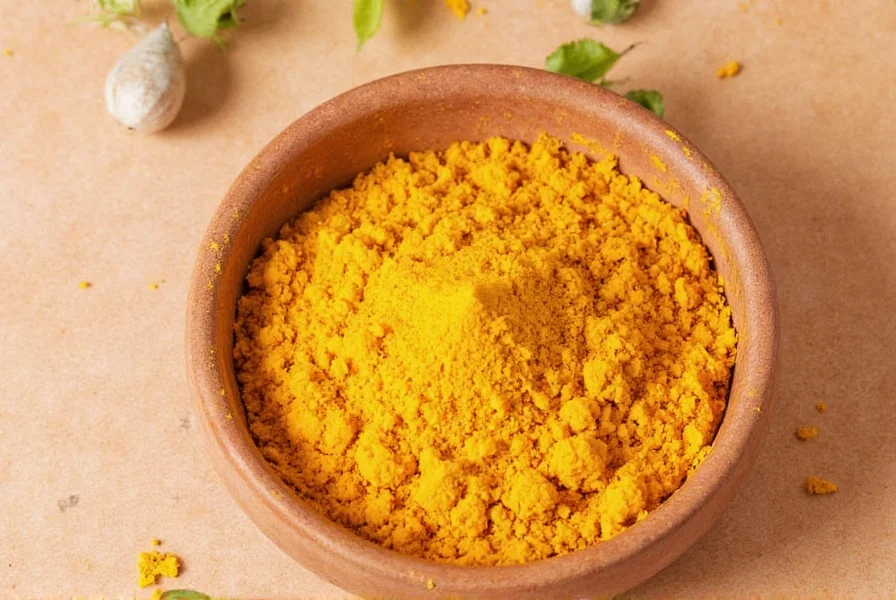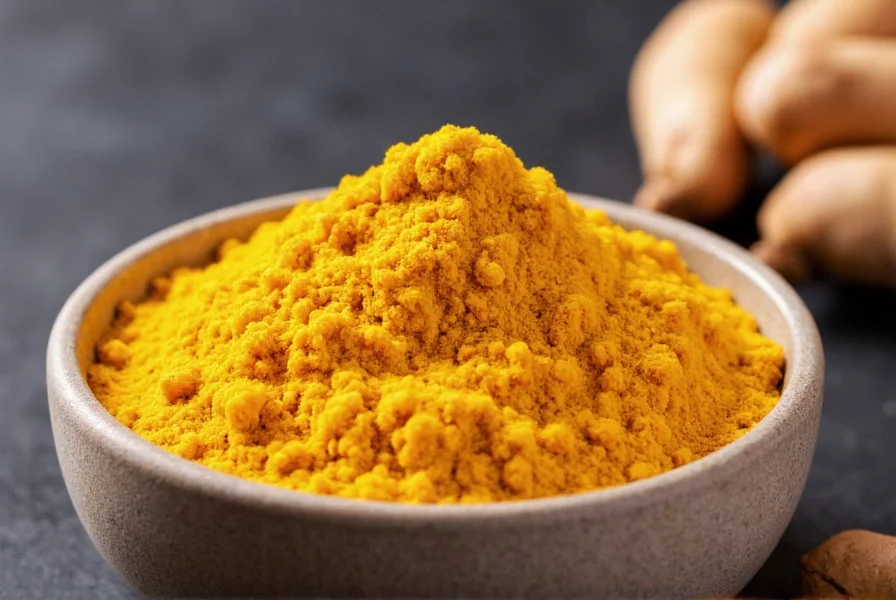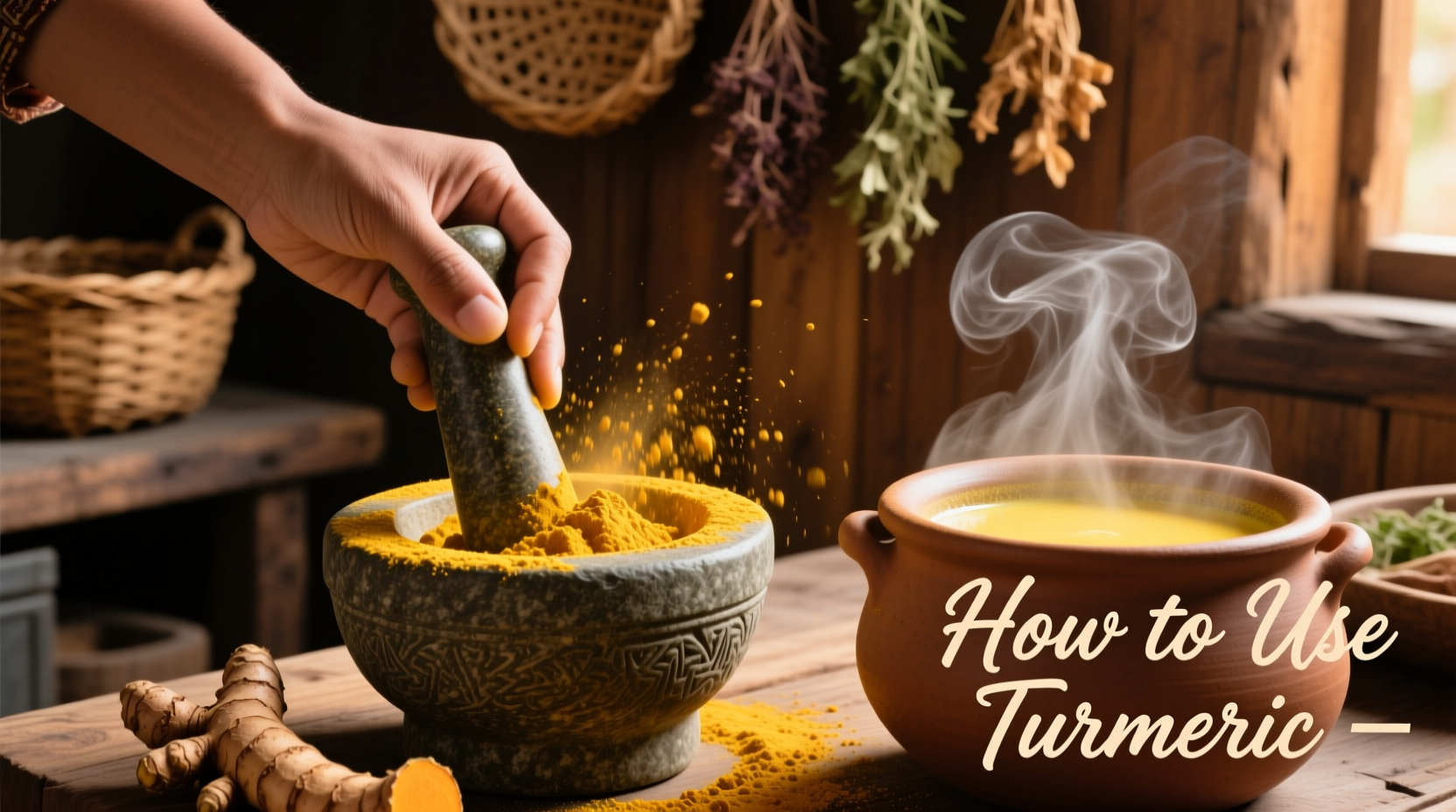Why Turmeric Usage Requires Care
Many home cooks abandon turmeric after stained countertops, bitter dishes, or ineffective health attempts. The core issue: turmeric’s potent curcuminoids (3–5% by weight) interact unpredictably with heat, light, and biology. Unlike milder spices, improper use creates waste and frustration. Medical News Today confirms dietary turmeric provides minimal health benefits due to poor absorption—a reality ignored by most guides.

The Science-Backed Usage Framework
Turmeric isn’t magic—it’s chemistry. Curcumin (its primary active compound) has extremely low solubility (<10 ng/ml) and undergoes rapid intestinal breakdown into inactive forms (Nutrition Research Reviews). This explains why:
- Cooking with turmeric delivers flavor/color but negligible curcumin absorption
- "Golden milk" without fat/pepper provides <5% bioavailability
- Adulterated products (e.g., with Sudan red dye) pose health risks
| Usage Form | Conversion Ratio | Max Daily Use | Critical Tip |
|---|---|---|---|
| Ground turmeric | 1 tsp = standard serving | ½ tsp per dish | Store in opaque container; loses potency in 6 months |
| Fresh turmeric | 1 tbsp grated = 1 tsp ground | 1 tbsp per recipe | Peel with spoon (no knife needed); freeze for 3 months |
| Supplements | N/A | 500mg with piperine | Verify CGM formulation (AGROLAB GROUP) |
Practical Cooking Applications
For flavor and color: Add ground turmeric early in cooking to mellow its earthy notes. Ideal for:
- Curry bases (½ tsp per 2 servings)
- Rice dishes (sprinkle over rice before adding water)
- Roasted vegetables (toss with oil and ¼ tsp turmeric)
- Add ⅛ tsp black pepper to turmeric-containing dishes
- Use in oil-based dressings (olive/coconut oil)
- Mix into smoothies with almond milk and ginger

When to Use (and Avoid) Turmeric
✅ Must Use When
- Creating yellow curry sauces (replaces saffron economically)
- Boosting iron intake (1 tbsp = 5.17mg iron; 29% DV for menstruating adults)
- Preserving pickled vegetables (natural colorant)
❌ Avoid When
- Expecting significant health benefits from cooking alone
- Using near light-colored fabrics/surfaces (permanent stains)
- Substituting 1:1 for fresh in recipes (causes bitterness)
Quality Verification: Avoiding Dangerous Substitutes
Adulterated turmeric often contains Sudan red dyes—carcinogenic colorants banned in food. AGROLAB GROUP confirms:
- Pure turmeric has earthy aroma; chemical smell indicates solvents
- Perform water test: Authentic turmeric disperses slowly; dyed versions bleed instantly
- Check for third-party testing (USP, NSF) on supplement labels
Step-by-Step Usage Guide
- Start small: Use ¼ tsp ground turmeric in first trial (overuse causes bitterness)
- Activate absorption: Add black pepper and 1 tsp healthy fat to every turmeric dish
- Prevent stains: Wear gloves with fresh turmeric; clean spills immediately with vinegar
- Store properly: Keep ground turmeric in dark glass; freeze fresh roots
- Verify supplements: Choose CGM-formulated products (per Nutrition Research Reviews)
Debunking Common Misconceptions
- Myth: “Turmeric in food provides significant health benefits”
- Fact: Curcumin’s low bioavailability (<1% absorption) makes dietary amounts ineffective for therapeutic outcomes (Medical News Today)
- Myth: “More turmeric = better results”
- Fact: Excess causes bitterness and may interact with blood thinners (per NIH guidelines)
- Myth: “All turmeric powders are equal”
- Fact: Adulteration rates exceed 20% in unverified products (AGROLAB GROUP)
Everything You Need to Know
Turmeric’s curcuminoids bind permanently to proteins in skin and fabrics. Always wear gloves when handling fresh turmeric. For spills, immediately apply vinegar or lemon juice before washing. Never use bleach—it sets the stain. Store ground turmeric in sealed containers away from light to prevent color transfer.
No—dietary turmeric has negligible health impact due to curcumin’s poor bioavailability. Medical News Today states typical culinary use delivers <1% absorption. For therapeutic effects, combine turmeric with black pepper (piperine) and fat to boost absorption 20x, or use clinically validated supplements like CGM formulations referenced in Nutrition Research Reviews.
Ground turmeric loses potency in 6 months. Store in an opaque glass jar in a cool, dark place. Fresh turmeric roots last 2 weeks refrigerated in paper bags, or 6 months frozen. Never store near heat sources—curcumin degrades above 40°C (104°F). Check for musty smells indicating mold.
Turmeric replaces saffron for color (use ¼ tsp turmeric per pinch saffron) but lacks saffron’s floral notes. It cannot substitute ginger—turmeric is earthy/bitter while ginger is spicy/sweet. Forks Over Knives notes 1 tsp ground turmeric = 1 tbsp fresh, but never use 1:1 fresh:dried ratios in recipes to avoid overpowering dishes.
Piperine in black pepper inhibits liver enzymes that break down curcumin, increasing absorption by up to 2,000% (per Medical News Today). Always add ⅛ tsp black pepper to turmeric dishes. Skip this step, and 95% of curcumin passes unused through your system—wasting both spice and potential benefits.










 浙公网安备
33010002000092号
浙公网安备
33010002000092号 浙B2-20120091-4
浙B2-20120091-4